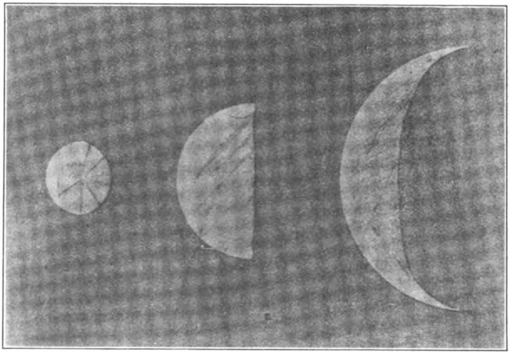of the inception of the investigation at Flagstaff and its execution and thought he had detected a short rotation for it.
Belopolski made his attempt at elongation in spite of knowing what I shall now explain. For elongation, although the time when the planet is easiest seen, is not that in which it is best examined spectrographically for rotation.
In the case of a body reflecting light, the shift varies from what it is if the body be emitting it, from twice as much in some positions to nothing at all in others. This is because the reflecting surface itself moves to or from the waves. Thus if a planet be on the side of the sun away from the earth, the rim of it which is approaching the earth advances to meet each new wave and so shortens it by just the amount
| October 15, 1896. | February 12, 1897. | March 26, 1897. |
of its own advance, thus doubling the shortage which would result if it emitted the waves itself. The receding side in the same manner doubles the recession. If the planet be at right angles to the sun the waves are affected as if they were emitted and we have a single shortening or lengthening, as the case may be. If the planet be between us and the sun, the rim is running from the sun at just the speed it is approaching us and the total effect is nil.
Thus in the case of Venus, the evidence of tilt obtained depends entirely on where you take her. Superior conjunction or when she lies beyond the sun is the best time spectrographically and it was this that Dr. Slipher chose. He caught the planet just as she was coming out from' behind the sun as evening star. In this he was abetted by the clear and steady air of Flagstaff, which enabled him to got her while she was still not far from the sun himself.


